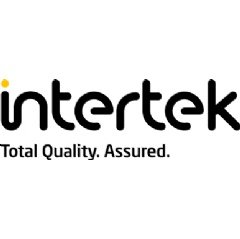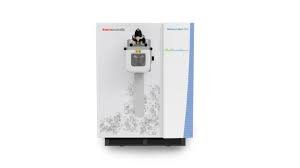Wednesday, 12 November 2025
Functional foods in Japan & the role of FOSHU, FNFC, and FFC
Japan is an attractive destination for dietary supplements that appeal to health and wellness companies offering active ingredients with superior nutritional value and food manufacturers looking to expand to new…

Japan is an attractive destination for dietary supplements that appeal to health and wellness companies offering active ingredients with superior nutritional value and food manufacturers looking to expand to new markets.
Abstract
In today’s scenario, where people increasingly look for ways to improve their overall health and well-being through dietary changes, functional foods have emerged as a popular food category. In addition to providing basic nourishment, functional foods are designed to offer consumers unique health benefits, which makes them a more desirable choice for the health-conscious.
It has been observed that functional food has a thriving market in Japan. Indeed, Japan has long been an eager adopter of functional foods. Today, owing to the Foods with Function Claims (FFC) framework, the market for such products in the country is flourishing. In 1991, the Ministry of Health, Labour and Welfare (MHLW), Japan, set up the Foods for Specified Health Use (FOSHU), a system for approving claims placed on food labels about how they affect human health.
This editorial explores how the FFC and FOSHU systems have shaped the functional food industry in Japan. Additionally, it delves into the market dynamics and consumer preferences of functional food systems in Japan, shedding light on the Regulatory structure and development of such systems.
An Introduction to Functional Food Regulations in Japan
In Japan, the regulation of food products falls under the jurisdiction of two key authorities, namely the Ministry of Health, Labor, and Welfare (MHLW) and the Consumer Affairs Agency (CAA). According to these bodies, food products in Japan are categorized into two (02)main groups:
- Foods in general.
- Foods with health claims.
As per the Japanese food regulations, while “foods in general” cannot be labelled with function claims, “foods with health claims” carry labels with function claims.
Foods with health claims fall into three (03) different categories – FOSHU, Food with Nutrient Function Claims (FNFC), and FFC – with each category having its own set of defined regulations for making verifiable claims concerning a product’s health benefits.
- FOSHU: Seeking approval for food products under FOSHU is certainly an uphill task for manufacturers. The Council of Pharmaceutical Affairs and Food Hygiene, a branch of the MHLW, conducts the evaluation of the food products under this category, and it is a rigorous process involving stringent scientific assessments to check the safety and efficacy of food products.
In 2001, FOSHU widened the extent of its regulating authority to cover both conventional foods as well as pills and capsules. Its authority was approved for about 330 products by January 2003, which in turn suggested its increasing importance in the Japanese market. Under the thirteen (13) different claim categories that FOSHU covers, categories such as gut conditioning, reduction of fat absorption, and eleven (11) more categories were included.
The MHLW was still facing challenges with regard to various food supplements when, in April 2001, it introduced a novel Regulatory system titled “foods with health claims.” This system encompasses both the existing FOSHU framework and a new section known as Foods with Nutrient Function Claims (FNFC).
How are Foods with Certain Nutritional or Health Functions Labeled under FOSHU?
FOSHU may include claims like “Slows down cholesterol absorption” since these food products are scientifically proven to be beneficial for health. Once the government has assessed the claimed effects and safety of each food product, the Secretary-General of the CAA approves their labelling. Most of the claims made by the Japanese FOSHU system are comparable to those made in the US under the category of structure/function claims or in the Codex Alimentarius under the category of increased function claims.
- FNFC: FNFC focuses on dietary supplements, which include twelve (12) vitamins (A, B1, B2, B6, B12, C, E, D, biotin, pantothenic acid, folic acid, and niacin) and two (02) minerals (calcium and iron); their functional benefits have been scientifically proven for efficacy. Some examples of claims related to supplements are:“Calcium is a nutrient which is necessary to form bones and teeth” or “Vitamin D is a nutrient which promotes calcium absorption in the gut intestine and aids in the formation of bones.” It is important to note here that FNFC specifies the upper and lower limits for daily nutrient consumption, providing both manufacturers and consumers with clear guidance. No formal registration with CAA or any other governing authority is required for this category of food supplements.
This kind of Regulatory framework, which combines the well-established FOSHU system with the innovative FNFC standards, ensures that consumers in Japan have access to a wide range of scientifically validated food products that promote overall health and well-being.
How are Foods with Certain Nutritional or Health Functions Labeled under the FNFC?
Foods can be categorized as FNFC if they contain one of the seventeen (17) vitamins and minerals whose roles have already been established by scientific evidence. FNFC makes claims in adherence to the dietary guidelines established by the CAA under MHLW. The assertions, which specify the precise requirement(s) for each vitamin and mineral, must be formalized by the CAA.
- FFC: A novel system called FFC was introduced in Japan in 2015, and it is distinct from both FOSHU and FNFC. FFC feature labels with function claims that are supported by scientific evidence provided by Food Business Operators (FBOs); they are submitted to the Secretary-General of the CAA for approval.
Prior to the establishment of the FFC system, the authority to make functional claims on food labels was exclusively granted to the government-approved FOSHU and FNFC. While these two (02) existing systems are still in place, FFC has been added to encompass a wide range of food products.
FFC includes fresh foods and supplements that display specific labeling on health benefits, which are backed by evidence from thorough literature reviews or clinical trials. FFC offers a relatively simpler marketing strategy than FOSHU, especially since manufacturers of these food products rely on systematic studies for supporting evidence.
How are Foods with Certain Nutritional or Health Functions Labeled under FFC?
For FFC, FBOs bear the full responsibility of labeling, which is, in turn, supported by scientific evidence. Before an FFC is marketed to be launched, the manufacturer provides the Secretary-General of the CAA with information proving the safety and efficacy of the FFC. In contrast to FOSHU, FFC is not individually pre-approved by the Secretary-General.
Figure 1: Health and Functional Food Categories in Japan

Source: Farid, M., K. Kodama, T. Arato, et al. “Comparative Study of Functional Food Regulations in Japan and Globally.”
A Functional Food Labeling System of the Local Hokkaido Government in Japan
In addition to the national systems, some of the Japanese local governments have the authority to certify the functionality of food based on scientific merits. A notable example of local government food regulation is the Hokkaido Functional Food Labeling System, popularly known as “Healthy DO.” This system, initiated by the Hokkaido government in Japan, was launched in 2013, two (02) years before the introduction of the FFC system.
Healthy DO was established with the primary objective of boosting the food-related industries in Hokkaido by enhancing the nutritional value of food products and meeting the specific information requirements of consumers.
A food product must meet the following criteria to qualify for the Healthy DO label:
- It needs to use functional materials from Hokkaido.
- It has to be a processed food product made in Hokkaido.
- A peer-reviewed article on the food product, with results from a human dietary intervention study conducted on its ingredients, must be published.
As per official CAA data, by February 2019, 113 items made by sixty-one (61) companies had been designated as Healthy DO items.
What are the Key Differences between FFC and Healthy DO Products?
While both the FFC and Healthy DO systems benefit food manufacturers because of their comprehensive, easily accessible regulations, they have major differences. FFC products need to be reported to the CAA, but Healthy DO products need certification from the Hokkaido government. FFC products can indicate usefulness in terms of maintaining and promoting health, while Healthy DO products can only indicate scientific evidence, proven by research, for functional foods. Here are some of the key areas where FFC and Healthy DO products differ:
- Human Intervention Studies
- Both the FFC and Healthy DO systems require human intervention studies to be conducted.
- FFC products require a clinical study for each final product.
- Healthy DO products require peer-reviewed papers reporting human intervention studies, but not necessarily for each final product.
- Certification for Specific Foods
- FFC does not certify foods that lead to high blood sugar levels, for example, confectionery items.
- Products certified under Healthy DO include confectionery items and luxury goods.
- Coexistence of Labels
- Products can carry both Healthy DO and FFC labels if they meet the respective requirements of both systems.
- Local Business Growth
- The Healthy DO system benefits small businesses by making certification more accessible.
- Other local governments in Japan, such as those of Niigata and Shikoku, are on the verge of adopting similar systems to promote local industries.
Registration Requirements for FFC in Japan: A Stringent Process Ensuring Safety and Efficacy
The government of Japan has established a set of comprehensive guidelines for the FFC system, featuring a rigorous set of prerequisites that a food product must satisfy before it can earn the coveted FFC label. Such regulations are in place to guarantee the safety, quality, and efficacy of food products marketed for their health benefits.
Every food product seeking FFC status must undergo registration within the centralized system administered by the CAA. The application and registration procedures are exclusively conducted through the CAA’s dedicated database. The successful registration of an FFC typically requires a minimum of six (06) months, entailing multiple stages and documentation requirements.
As an integral part of the application process, companies are mandated to articulate the claims associated with their food products in a transparent and accurate manner while furnishing substantiating scientific evidence on them. The safety and efficacy of FFC are assessed using the following two (02) methods:
- Conducting a clinical trial involving the finished product.
- Conducting a systematic literature review focused on the finished product or active ingredient.
Why is FFC Emerging as More Popular than Other Functional Food Regulation Systems?
One of the primary reasons for the swelling popularity of the FFC system among food manufacturers, especially smaller-scale companies, is that the category encompasses a wide range of food products and has more flexible regulations than other systems. Within the FFC system, the government of Japan has granted certification for numerous health claims associated with areas such as eye health, joint support, stress management, cognitive enhancement, sleep quality, reduction of physical fatigue, and obesity management, which had previously not received approval under the FOSHU system. According to a recent study, dietary supplement companies that introduce their products into the Japanese market with an FFC claim experience a significantly higher growth rate as compared to those that lack such a claim.
According to the CAA’s research findings, the three (03) primary areas of claims related to new product introductions were gut health, body fat reduction, and triglyceride reduction. Some of the other prolific claims were on supporting eye function, keeping skin moisturized, and maintaining normal blood pressure. These were then followed by claims on joint function, memory function, stress relief, and blood sugar moderation.
Revolutionizing the field of functional food claims, Japan introduced FFC in 2015. At present, FFC is widely regarded as a more streamlined pathway to market entry when compared to Japan’s other food regulation systems like FOSHU and FNFC. Unlike FOSHU, products falling under the FFC umbrella are not required to provide clinical trial evidence; instead, they can rely on information from sources like systematic reviews.
The Way Forward: A Promising Future for Japan’s FFC Market
In 2022, Japan’s FFC market demonstrated significant growth, reaching a valuation of JPY 546. ($3.71 billion), marking a remarkable twenty-four (24) per cent year-on-year increase. In the same year, as its impressive growth continued, its shipment values reached approximately JPY 441.8 billion. Projections suggest that the FFC market will continue to expand; in fact, it is anticipated to reach JPY 593.5 billion (about USD 4.03 billion) in the latter half of this year (2023).
As per studies, the FOSHU market reported a valuation of JPY 286 billion (approximately $ 1.94 billion) for 2022–23. Notably, the FFC category had already surpassed the FOSHU sector in 2020, just five (05) years since its inception in 2015.
Japan is an attractive destination for dietary supplements that appeal to health and wellness companies offering active ingredients with superior nutritional value and food manufacturers looking to expand to new markets.
As per the CAA database (last updated on September 11, 2023), Japan currently has 7,473 products registered as FFC, and this figure is poised to grow as the demand for healthy and functional foods among the Japanese population continues to surge.
While in some countries, Regulatory constraints have suppressed the development of functional foods, Japan’s Regulatory environment is conducive to growth; it has emerged as a fertile ground for innovation and development. Japanese food companies are seeking science-backed ingredients that can help them with product innovation. Moreover, there are promising opportunities for international food companies in the thriving Japanese market that is becoming flooded with healthier food options.
Japanese consumers exhibit a keen interest in functional foods; this is because they are a health-conscious population who place a significant emphasis on the functionality of ingredients when making food choices. Consequently, they are willing to invest more time and money in the pursuit of food containing added health and nutritional benefits. This explains why FFCs, which are typically priced 1.5 times higher than ordinary foods, are in such high demand. Thus, the rise of FFC in Japan is interesting not only because of the added health benefits they offer but also because they are an attractive investment prospect for consumers, thereby capable of giving a huge boost to the economy.
Meher Bhattiprolu
Manager, Global Regulatory Services, Food Products
ETSUKO OGAWA
Senior Manager, Consumer Regulatory Affairs, Freyr Solutions.
References
“About Foods with Function Claims.” CAA, Government of Japan. Available at https://www.caa.go.jp/policies/policy/food_labeling/foods_with_function_claims/.
“Food for Specific Health Uses (FOSHU).” MHLW. Available at https://www.mhlw.go.jp/english/topics/foodsafety/fhc/02.html.
“Japan: Japan’s New Health Claims Labeling System Creates Opportunities.” Foreign Agricultural Service, United States Department of Agriculture (USDA). August 04, 2015. Available at https://www.fas.usda.gov/data/japan-japan-s-new-health-claims-labeling-system-creates-opportunities.
“What are Foods with Functional Claims?” Food Labeling Division, CAA. Available at https://www.caa.go.jp/policies/policy/food_labeling/information/pamphlets/pdf/151224_1.pdf.
Farid, M., K. Kodama, T. Arato, et al. “Comparative Study of Functional Food Regulations in Japan and Globally.” Global Journal of Health Science 11, no. 6 (2019). Available at https://www.researchgate.net/publication/333057820_Comparative_Study_of_Functional_Food_Regulations_in_Japan_and_Globally.
Fuji Keizai Group: Press Release. Available at https://www.fuji-keizai.co.jp/file.html?dir=press&file=23025.pdf&nocache.
Kamioka, H., K. Tsutani, H. Origasa, et al. “Quality of Systematic Reviews of the Foods with Function Claims in Japan: Comparative Before- and After-evaluation of Verification Reports by the Consumer Affairs Agency.” Nutrients 11, no. 7 (2019): 1583. Available at https://www.mdpi.com/2072-6643/11/7/1583.
Koe, T. “Can Japan’s Food with Function Claims Keep Up with the Demand for More Science and Ethical Advertising?” Nutraingredients-Asia. September 13, 2023. Available at https://www.nutraingredients-asia.com/Article/2023/09/13/Japan-s-FFC-sector-needs-to-keep-up-with-demand-for-science-and-ethical-advertising-for-continued-growth#.
Sato, K., K. Kodama, and S. Sengoku. “Optimizing the Relationship between Regulation and Innovation in Dietary Supplements: A Case Study of Food with Function Claims in Japan.” Nutrients 15, no. 2 (2023). Available at https://www.mdpi.com/2072-6643/15/2/476.
Shimizu, T. “Health Claims on Functional Foods: The Japanese Regulations and an International Comparison.” Nutritional Research Reviews: Cambridge Core 16, no. 2 (2003): 241–52. Available at https://www.cambridge.org/core/journals/nutrition-research-reviews/article/health-claims-on-functional-foods-the-japanese-regulations-and-an-international-comparison/89585CAA183A4837540645FD15047F11.
Technology
MENU ORDER AI to launch app aimed at GLP-1 users and health-conscious diners
Nov 10, 2025 | Company News
Harnessing Quantum AI for Greener Minds and Healthier Futures
Nov 10, 2025 | Interaction
Intertek acquires Costa Rican testing business Suplilab
Nov 07, 2025 | Company News
Food Testing
Intertek acquires Costa Rican testing business Suplilab
Nov 07, 2025 | Company News
Thermo Fisher Scientific launches Orbitrap mass detector for food safety testing
Oct 24, 2025 | Company News
ADM advances quality capabilities with opening of new Central Milling Laboratory
Oct 16, 2025 | Company News
More Popular
HEINEKEN opens new brewery in Brazil
Nov 12, 2025 | Beverages
Remilk and Gad Dairies introduce The New Milk in Israel
Nov 12, 2025 | Beverages
Ochre Spirits closes seed round led by Ah! Ventures to build next-gen beverage house
Nov 12, 2025 | Beverages





